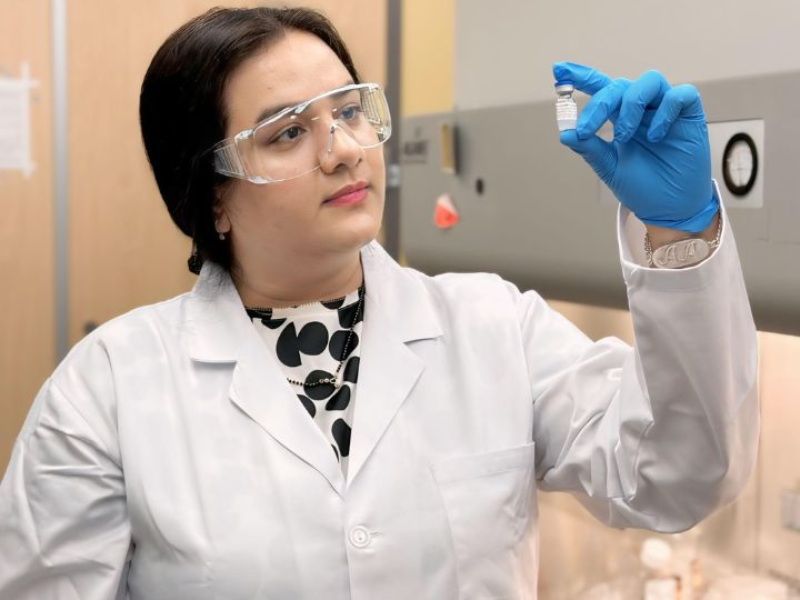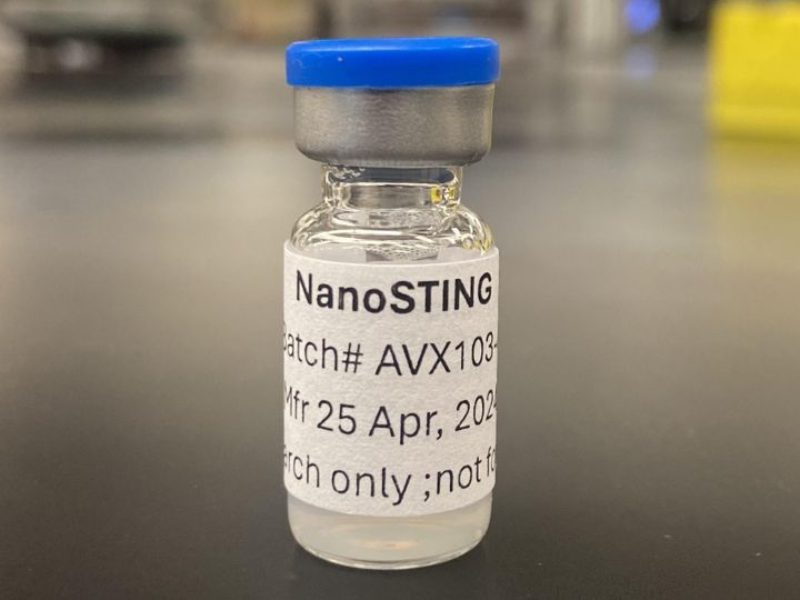Team Develops Two Nasal Sprays — An Immune Activator and a New Vaccine — To Prevent Virus Transmission
A team of researchers, led by the University of Houston, has discovered two new ways of preventing and treating respiratory viruses. In back-to-back papers in Nature Communications, the team — from the lab of Navin Varadarajan, M.D. Anderson Professor of William A. Brookshire Chemical and Biomolecular Engineering - reports the development and validation of NanoSTING, a nasal spray, as a broad-spectrum immune activator for controlling infection against multiple respiratory viruses; and the development of NanoSTING-SN, a pan-coronavirus nasal vaccine, that can protect against infection and disease by all members of the coronavirus family.
NanoSTING Therapeutic’s Highlights
- NanoSTING, a nasal spray, can prevent multiple respiratory viruses by activating the immune system and preventing infection from viruses. It can also protect against SARS-CoV-2 reinfection.
- A single intranasal dose of the NanoSTING has proven effective against strains of SARS-CoV-2 and the flu virus.
- NanoSTING is complementary to vaccines and enables cells to be in a heightened state of alert to prevent attack from respiratory viruses.
NanoSTING-NS Pan-coronavirus Vaccine’s Highlights
- UH researchers have developed NanoSTING-SN, a nasal vaccine that prevents transmission to the unvaccinated and fights multiple COVID variants.
- NanoSTING-SN provides the exciting potential towards a universal coronavirus vaccine and may end the cycle of onward transmission and viral evolution in immunocompromised people.
- Intramuscular vaccines prevent disease but are less efficient in preventing infections. NanoSTING-SN can provide improved protection against transmission for COVID variants and related sarbecoviruses.
NanoSTING
NanoSTING is a special formula that uses tiny fat droplets to deliver an immune-boosting ingredient called cGAMP. This formula helps the body's cells stay on high alert to prevent attack from respiratory viruses.
“Using multiple models, the team demonstrated that a single treatment with NanoSTING not only protects against pathogenic strains of SARS-CoV-2 but also prevents transmission of highly transmissible variants like the Omicron variants,” reports Varadarajan. “Delivery of NanoSTING to the nose ensures that the immune system is activated in the nasal compartment and this in turn prevents infection from viruses.”
As the recent COVID19 pandemic illustrated, the development of off-the-shelf treatments that counteract respiratory viruses is a largely unsolved problem with a huge impact on human lives.
“Our results showed that intranasal delivery of NanoSTING, is capable of eliciting beneficial type I and type III interferon responses that are associated with immune protection and antiviral benefit,” reports first author and postdoctoral associate, Ankita Leekha.
The authors further show that NanoSTING can protect against both Tamiflu sensitive and resistant strains of influenza, underscoring its potential as a broad-spectrum therapeutic.
“The ability to activate the innate immune system presents an attractive route to armoring humans against multiple respiratory viruses, viral variants and also minimizing transmission to vulnerable people,” said Leekha. “The advantage of NanoSTING is that only one dose is required unlike the antivirals like Tamiflu that require 10 doses.”
The mechanism of action of NanoSTING is complementary to vaccines, monoclonal antibodies and antivirals, the authors noted.
Nano STING-SN
Despite the successful implementation of multiple vaccines against SARS-CoV-2, these vaccines need constant updates due to viral evolution, plus the current generation of vaccines only offers limited protection against transmission of SARS-CoV-2.
Enter NanoSTING-SN, a multi-antigen, intranasal vaccine, that eliminates virus replication in both the lungs and the nostrils and has the ability to protect against multiple coronaviruses and variants.
“Using multiple preclinical models, the team demonstrated that the vaccine candidate protects the primary host from disease when challenged with highly pathogenic variants. Significantly, the vaccine also prevents transmission of highly transmissible variants like the Omicron variants to vaccine-naïve hosts,” reports Varadarajan.
The authors further show that the nasal vaccine was 100% effective at preventing transmission of the Omicron VOCs to unvaccinated hosts.
“The ability to protect against multiple coronaviruses and variants provides the exciting potential towards a universal coronavirus vaccine,” said Leekha. “The ability to prevent infections and transmission might finally end this cycle of onward transmission and viral evolution in immunocompromised people.”
The research was conducted by a collaborative team at UH including Xinli Liu, College of Pharmacy and Vallabh E. Das, College of Optometry along with Brett L. Hurst of Utah State University and consultation from AuraVax Therapeutics, a spinoff from Varadarajan’s Single Cell Lab at UH, which is developing NanoSTING.
Funding for the studies was provided by NIH (R01GM143243), Owens Foundation, and AuraVax Therapeutics.


